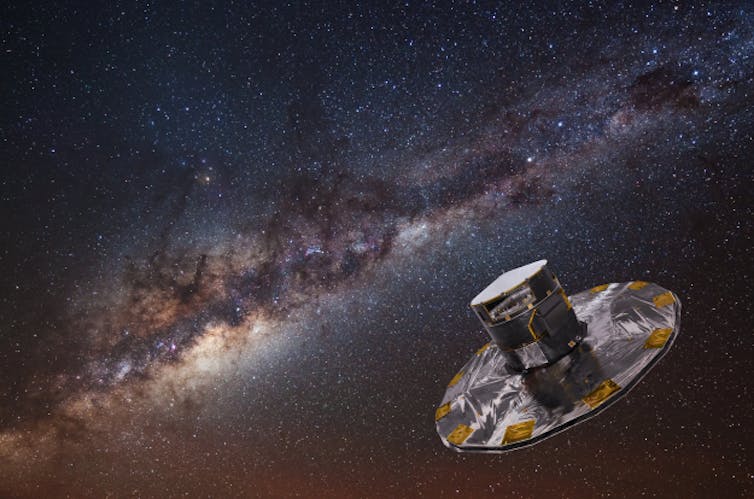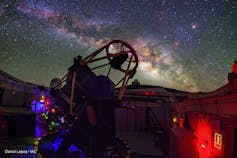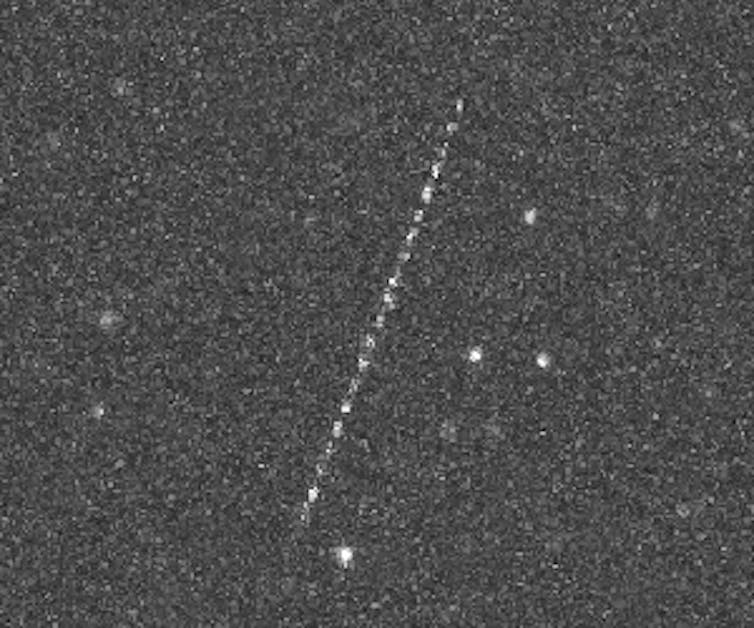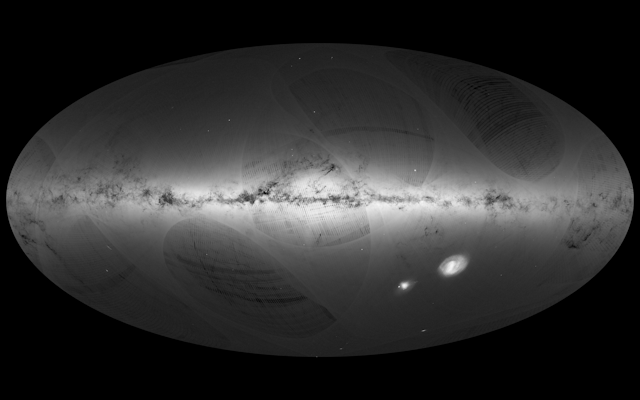The positions and velocities of a billion stars in our own galaxy have been released, measured to a precision never achieved before. The data, obtained by the European Space Agency’s Gaia spacecraft is a milestone in stellar cartography. The brightest stars will eventually be measured to the nearest five-hundred-millionth of a degree. That’s like using a telescope in London to see the width of a human hair in Rome.
The Gaia catalogue is the first part of an incredibly clear and precise snapshot, revealing the three-dimensional layout and motion of all stars in our part of the Milky Way galaxy. This data will revolutionise our understanding of our place in the universe.
But this incredible precision requires a lot of effort and depends in part on accurate tracking of the Gaia spacecraft itself – a task achieved by The Liverpool Telescope (LT) on the Canary Island of La Palma and the VLT Survey Telescope in Paranal, Chile.
Sensitive measurements
The Gaia spacecraft was launched in 2013, and is now in a special orbit, effectively hovering 1.5m kilometres over the Earth’s night side. Both Gaia and Earth are moving in tandem around the sun at an average speed of 30 kilometres per second.
Because Gaia is physically moving relative to the stars, an effect called “aberration of starlight” takes place. This causes the position of a star in the sky to appear to be shifted slightly towards the direction of motion. The size of the shift varies throughout the year due to variations in both Gaia’s and the Earth’s speed through space, but at most it’s just 1/180th of a degree (just over 1% of the apparent size of the moon).

As small as that shift seems, it’s more than enough to spoil Gaia’s measurements unless it’s precisely corrected for. To achieve this correction to that degree of precision, the absolute velocity of Gaia must be known to just 2.5 millimetres per second.
Also, Gaia is detecting objects in the solar system. To measure their positions and velocities accurately enough, the exact location of Gaia itself must be known to within 150 metres. Knowing its position at all times makes sure we have an accurate baseline so we can determine the location of another body by triangulating from known points.
All this means that Gaia’s position and velocity need to be regularly known to high precision. Surprisingly, this can actually be achieved by tracking Gaia from the Earth’s surface, 1.5m kilometres away. This is no mean feat; at that distance 150 metres makes an angle (of the triangle) of just 1/180,000 of a degree, the apparent size of a 1p coin 200 kilometres away.
Using special radar techniques, the European Space Agency (ESA) can track Gaia this precisely using their Deep Space Antenna (DSA) network. However they can’t do this all the time because those antennae are also used to monitor other space missions, and Gaia can’t hog the network. So to fill the gaps in coverage, ESA also tracks Gaia optically with large ground-based telescopes as part of their Ground-Based Optical Tracking (GBOT) programme.
GBOT was built up over 2008-2013 by the team of astronomers scientifically conducting the mission. Gaia is seen only by reflected sunlight and at that distance is incredibly faint. So the telescopes have to be big, with a main mirror at least two meters in diameter. They must also be flexible enough time-wise to allow regular observations of the same target for months on end. Telescopes this big are professional facilities that don’t usually observe targets in this manner, they are normally involved in a number of different observations.
Reliable tracking
Only a very few facilities can tick both of those boxes, and one of them is the Liverpool Telescope.

The Liverpool Telescope came online in 2004. Though based in La Palma, it’s run by Liverpool John Moores University’s Astrophysics Research Institute. It’s completely robotic, opening itself up at sunset, protecting itself from the elements, and deciding for itself what to observe – all without human intervention.
Astronomers can drop their observing requests into the telescope’s database at any time, and its robotic scheduler picks those requests that best match sky conditions throughout the night. Astronomers can therefore spread out their allocated time through the semester any way they like. This unique flexibility for a professional telescope of this size makes it perfect for tracking Gaia.
The Gaia team therefore recruited the Liverpool Telescope, along with the 2.6-metre VLT Survey Telescope. Its scheduler suggests potential observations, but a human on duty all night makes the decisions on what to observe.
Also, the Las Cumbres Observatory’s two two-metre Faulkes Telescopes in Hawaii and Australia provide backup observations, in case both the LT and VST are not available due to bad weather or other reasons.

The Liverpool Telescope takes about 20 exposures of Gaia every night with its main camera. The raw images are processed the next morning in Liverpool, and then sent to other GBOT astronomers at the Observatoire de Paris in France. There, Gaia’s position is very precisely measured relative to the background stars in the image.
These measurements are then sent to ESA’s European Space Operations Centre in Darmstadt, Germany, where they’re used to calculate Gaia’s exact path, and so help to refine the Gaia catalogue’s amazing precision.
The recent data release is just the first; a small portion of the entire wealth of information we expect in the near future. There will be more such releases in coming years as Gaia continues its five-year mission, and the final complete catalogue will be ready sometime in 2022.
The information will give us a better understanding of how stars travel around the galaxy, how they’re born and evolve, and how (and why) planets form around them. This will also help discover thousands of extra-solar planets. Closer to home, hundreds of thousands of minor planets in the solar system will be mapped to a much better precision, and new ones may be discovered.
We’ll even be able to see how the gravity of the sun and the major planets (Jupiter, Saturn, Uranus and Neptune) bend starlight as Gaia flies through the solar system, revealing information about the structure of space-time itself.

